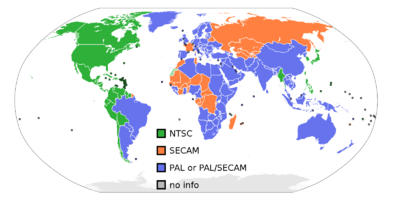Within the video game community, NTSC is a term used to refer to the region of North America and small parts of South America and Asia. The term comes from the analog television encoding system National Television System Committee, the primary method of encoding analog TV for North America, South America, and Japan.
However, the Japanese NTSC encoding (referred to colloquially as NTSC-J) is slightly different than the international NTSC coding, so there are generally minor difference between the two. Due to this, NTSC is most commonly used as shorthand for "the North American version of a game". Historically, North America is usually the second region for games made in Japan to be released; compared to the many European languages that require their own translations, only a few languages (English at most, and potentially Spanish and French) are necessary for one of the largest markets. As a result, NTSC releases are often the second version of the game, with major bugs fixed and possibly minor changes added.
The NTSC version of each game is also generally the standard for competitive play, due to the potential differences between
Summary of NTSC releases of the Super Smash Bros. series
Super Smash Bros.
The original Super Smash Bros.'s international NTSC release contains a great deal of changes from its NTSC-J counterpart. Several changes were made to almost all characters, most notably Link and Ness, both of whom were theoretically nerfed down over a tier's worth of tier list positioning.
Super Smash Bros. Melee
Aside from translations, there is effectively no difference at all between the NTSC versions of Melee—both versions of the game even include each others' language available for selection. Both regions received the same revisions between versions 1.0, 1.1, and 1.2.
Super Smash Bros. Brawl
In order for cross-region online play to be possible, the only differences between versions of Brawl are purely aesthetic, though they are still encoded differently.
Super Smash Bros. 4 / Super Smash Bros. Ultimate
Neither version of Smash 4, nor Ultimate, use analog connections, and as such the North American versions of these games only have aesthetic differences from their original Japanese counterparts, similarly to Brawl. As the Nintendo Switch is region free, Ultimate essentially only has one version, with all of its regional differences built into the cartridge.

